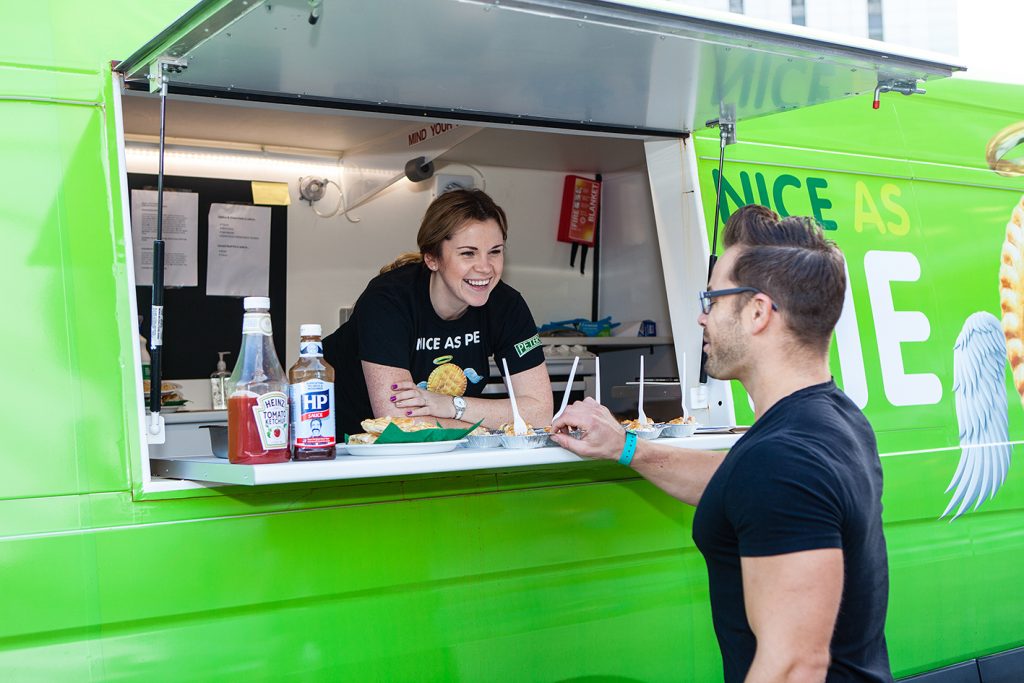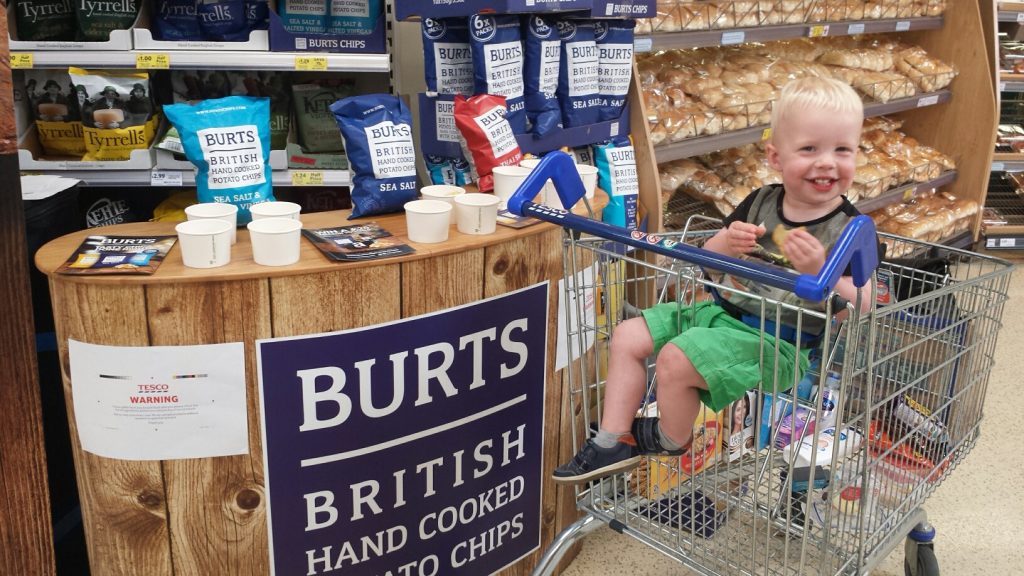FMCG – Why Experiential Marketing?
FMCG are defined as, “consumer goods products that sell quickly at relatively low cost – items such as milk, gum, fruit and vegetables, toilet paper, soda, beer and over-the-counter drugs like aspirin” (Investopedia). These goods make up the majority of supermarkets’ inventories, however, brands often face difficulties when trying to differentiate from competitors.
What problems are faced when marketing FMCG?
Saturated markets
FMCG markets are highly competitive, with most buyers running their own competitor brands, think Tesco Basics, Value and Finest. It’s difficult to stand out, especially when your product is surrounded by similar alternatives. This is true to the extent that FMCG brands are constantly pushing for what small competitive advantages they can get, down to location and size of the shelves they occupy.
Low consumer involvement
Another limiting factor is that these goods have low levels of consumer involvement, i.e. customers, in general, put very little effort into shopping around between brands. Often consumers find a brand that suffices and stick with it to save themselves time. The key to successful FMCG marketing is to raise this level of involvement, making consumers think before they buy.
Why Experiential Marketing?
According to Eventtrack 2015 75% of organisations agreed in-person events are an effective marketing tactic, with the same survey showing 49 percent of brands realize an ROI of between 3:1 and 5:1. This falls in line with a universal paradigm shift towards personalisation and relationship marketing. The good news for FMCG brands, is the category shares many innate synergies with experiential marketing making it powerful tool.
Recommended Case Study: Rachel’s Organic at the Royal Welsh Show
FMCG markets are heavily saturated, with brands constantly seeking to differentiate themselves from competitors. According to igd, “We will see brands focusing on deep customer insight to deliver more personalised interactions and retailers will really learn how to win with people, rather than customers.” Experiential installations not only facilitate these interactions, they provide a non-invasive route for data capture which creates a positive cycle of feedback to further target future campaigns.
Experiential marketing gives brands the opportunity to set themselves apart from competitors who focus their budgets on the highly competitive, traditional channels, whilst demonstrating the USPs of their product first-hand.
Versatility
Versatility of product is key in experiential marketing and FMCG have it in abundance. In terms of sampling, FMCG are typically small, produced ‘en masse’ and require a short interaction period, this is perfect for mass sample distribution. By holding an FMCG sampling campaign at the point of purchase, brands have a winning combination, as time between sampling and potential purchase is as low as it can possibly be.
For larger experiential activations, away from retailers, FMCG are still perfect for distribution as samples. The inherent simplicity of these products is an added bonus, meaning brand ambassadors do not require long periods of time to actively engage consumers. Therefore, the number of potential interactions per brand ambassador, per hour is much higher than with complex products or services.
(Almost) Universal Appeal
They are called consumer goods for a reason, people consume them… regularly. The takeaway is that 99% of footfall, in and around a brand’s activation, are potential customers. Everyone uses toilet roll or washing up liquid or washing tablets. This is highly beneficial, it allows brands to create a targeted campaign, whilst still improving brand awareness amongst consumers outside the target demographic.
Experiential Drives Consumer Involvement
Consumer involvement is a driving factor in brand affinity. The more consumers interact positively with a brand, the deeper the relationship becomes, especially when the brand is adding value. Adding value in this way (through promotions, information or samples) doesn’t just give brands a human face, it creates a psychological CTA in the form of reciprocity, inspiring consumers to put value back into a brand which has done the same for them.
“Reciprocity is a very, very strong instinct,” according to Dan Ariely, a behavioural economist at Duke University. “If somebody does something for you”—such as giving you a quarter of a ravioli on a piece of wax paper—“you really feel a rather surprisingly strong obligation to do something back for them.”
Face-to-Face Events Bridge Gaps in Consumer Knowledge
Events provide brands an equal opportunity to give after-sale support, as they do driving initial sales. Through knowledge based campaigns, FMCG brands can help consumers get the most out of their product, whether it be a fresh recipe, a cutting edge cocktail or a seminar on how to cut down on waste. By educating consumers on how to better incorporate your product into their lives, you incentivise them to do so in the first place.
Increase Buyer Confidence
This is true for brands who distribute samples at the point of sale. Sampling has been known to boost sales up to 600% in certain FMCG categories, according to theatlantic.com, retailers have access to these figures and will reward successful brands with their confidence, giving products more shelf space in better positions. It is these small battles which make the difference in such a hotly contested market.
Flexibility
FMCG are flexible by nature, this opens up a variety of options when it comes to marketing, as it allows the brand to choose the optimum positioning for their brand.
This flexibility allows brands to operate re-actively, capitalising on current trends or responding to customer comments, as Domino’s did with their #pizzaonatrain stunt.
Flexibility lends itself to the inherently creative nature of experiential marketing, allowing FMCG brands to create experiences which truly differentiate themselves from competitors.
Pester Power
“Nine out of 10 parents said their children demand things when out shopping together,” with one in six parents admits they find it difficult to tell their child “no” in these situations, according to the telegraph. Factor in that FMCG products are typically bought for the household and these brands have golden opportunity to target children’s pester power.
Using this information, brands can tailor live experiences to accommodate children. By creating a highly engaged, emotional bond, a well-targeted experiential campaign can harness the typically fad-driven preferences of these young influencers.
To Conclude
Through these factors, we see why experiential marketing has the potential to be so effective for FMCG brands. A variety of innate synergies, combined with activities which add value both to the brand and to the consumer, give brands who use this type of engagement marketing effectively the edge in a highly competitive sector.
For more information about how eventeem can help your FMCG brand, either with experiential marketing or promotional staff, contact us today, we’d love to hear from you!



